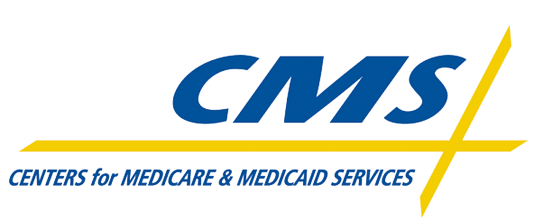Earlier this month CMS released an updated MMSEA Section 111
Medicare Secondary Payer Mandatory Reporting User Guide (Version
6.0). Here are the key updates with
analysis and practical implications.
Additional Definition of Total Payment Obligation to
Claimant (TPOC)
Section 6.4 of Volume 3 (Policy Guidance) of the user guide defines
TPOC this way:
The TPOC Amount refers to the dollar amount of a
settlement, judgment, award, or other payment in addition to or apart from
ORM. [Ongoing Responsibilities for Medicals] A TPOC generally reflects a
“one-time” or “lump sum” settlement, judgment, award, or other payment intended
to resolve or partially resolve a claim. It is the dollar amount of the total payment
obligation to, or on behalf of the injured party in connection with the
settlement, judgment, award, or other payment. Individual reimbursements paid
for specific medical claims submitted to an RRE [Responsible Reporting Entity],
paid due the RRE’s ORM for the claim, do not constitute separate TPOC
amounts.
The update added an explanation of the TPOC amount
computation to this definition:
The computation of the TPOC amount includes, but is not
limited to, all Medicare covered and
non-covered medical expenses related to the claim(s),
indemnity (lost wages, property damages, etc.), attorney fees, set-aside amount
(if applicable), payout totals for all annuities rather than cost or present
values, settlement advances, lien payments (including repayment of Medicare
conditional payments), and amounts forgiven by the carrier/insurer.
CMS’s definition seems to have been largely pulled from the Workers’
Compensation Medicare Set-Aside (WCMSA) Reference Guide’s definition of total
settlement. Its purpose in the WCMSA
Reference Guide is to determine whether a settlement meets CMS MSA review
thresholds. While we assume CMS’s intent
is to help reporting entities better determine the TPOC amount, adding this
computation definition raises some concerns:
- Liens & Medicare Conditional Payments: In some cases, lien payments, including the
Medicare repayment conditional payment amount, is not known at the time of
settlement. This is not a problem if the
injured worker is repaying Medicare out of the settlement amount. But it may be
a problem if the employer or carrier is agreeing to pay Medicare with funds
outside of the settlement amount because they may not have a final demand
amount prior to settlement. Our solution
would be for CMS to clarify that a lien payment, namely a repayment of Medicare
conditional payments made directly to Medicare or to a lienholder, Medicaid for
example, is not part of the TPOC computation.
- Amounts Forgiven in Settlement: Besides repayment of liens, CMS also brings
in the term “amounts forgiven” from the WCMSA definition of settlement. While
it has never been further defined in the CMS WCMSA Reference Guide and CMS
provides no further clarification here, the general understanding is that this
refers to the carrier or employer’s waiver of a subrogation lien against a 3rd
party liability settlement. An employer
or carrier may waive their subrogation lien for many reasons, and they may do
so without having a firm dollar amount to even determine the “amounts
forgiven.”
We see using the amounts forgiven
term as a way for CMS to provide settling parties the ability to obtain an MSA
approval when the WC case is settling and all or most of the settlement funds
are coming from a 3rd party liability settlement. However, in the mandatory reporting context,
amounts forgiven is a specific dollar amount which must reported and thus
becomes relevant to Medicare conditional payment recovery
Were the WC carrier to report amounts
forgiven in the TPOC amount, CMS and its recovery contractor would assume that
the injured worker has received these funds as part of the WC settlement, which
is not the case. These funds are not a
payment to the claimant. The injured
worker presumably receives payment from the 3rd party liability
settlement and, if he or she was a Medicare beneficiary at the time of that
settlement, this will be reported to Medicare.
Requiring the WC carrier to report amounts forgiven in settlement and
then having the liability carrier report the liability settlement is
duplicative and unnecessary to protect Medicare’s interests. We hope CMS reconsiders the use of this
terminology in its TPOC computation or clarifies what they mean by amounts
forgiven.
Indemnity-Only Settlements are Not Reportable
Following its August 13, 2020 webinar on Section 111
reporting where CMS officials reiterated that indemnity-only settlements are
not reportable as TPOC, CMS has now added the following to Section 6.5.1 of the
guide, which also incorporates “property damage only” claims:
RREs are not required to report liability insurance
(including self-insurance) settlements, judgments, awards or other payments for
“property damage only” claims which did not claim and/or release medicals or
have the effect of releasing medicals. Similarly, “indemnity-only” settlements,
which seek to compensate for non-medical damages, should not be reported. The
critical variable to consider is whether or not a settlement releases or has
the effect of releasing medicals. If it does, regardless of the allocation (or
lack thereof), the settlement must be reported.
This raises the question of whether a prior indemnity-only
settlement amount is combined with a later settlement releasing medicals and
reported as TPOC. As mentioned earlier, CMS’s
TPOC computation definition was taken from the CMS WCMSA Reference Guide and
applied to the TPOC computation. In
doing so, CMS excluded the phrase “prior settlements of the same claim” to the
TPOC definition. Based on this
exclusion, which is consistent with other guidance in the user guide, we accept
that a prior indemnity-only settlement is not reported as TPOC, even when a
later settlement releases medicals.
If you have any questions, please contact Dan Anders, Chief
Compliance Officer, at Daniel.anders@towermsa.com or 888.331.4941.











